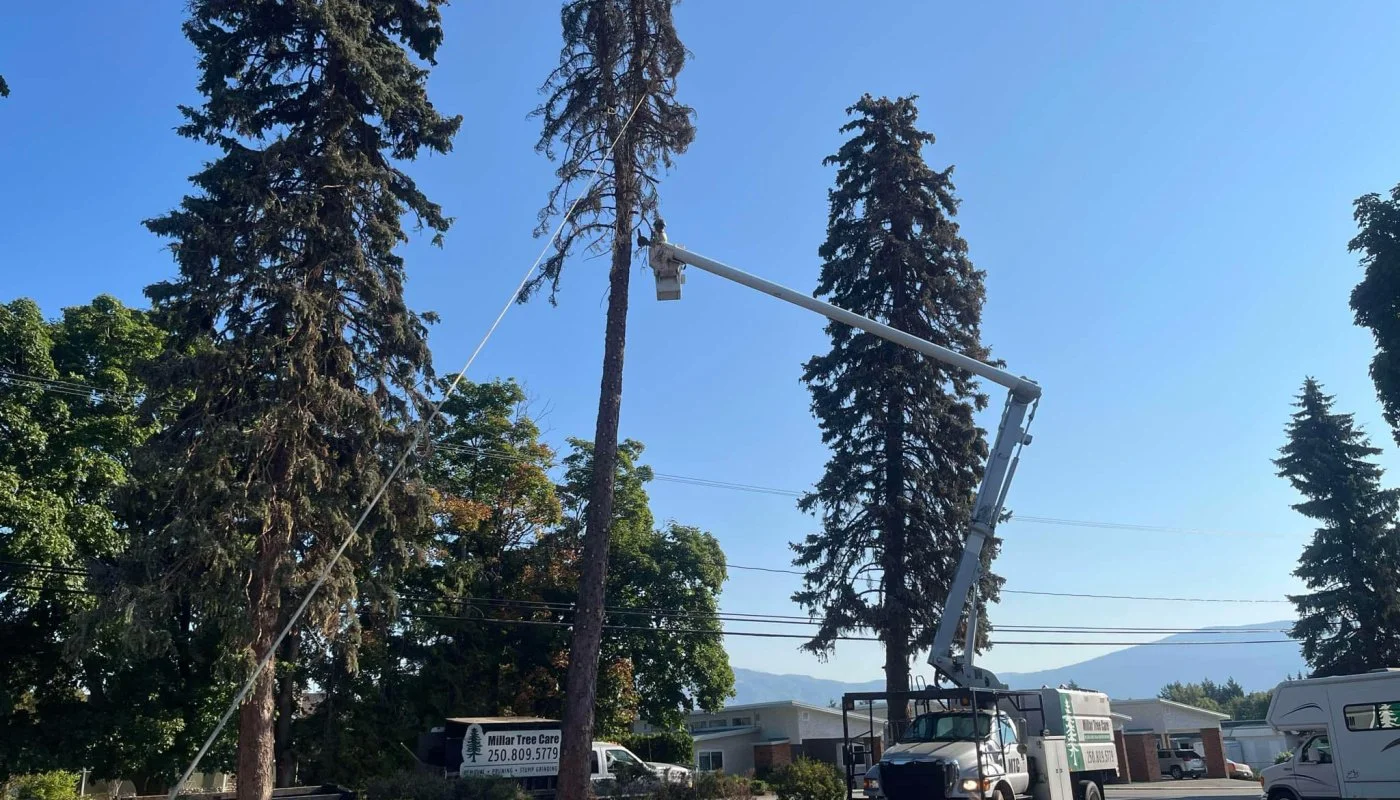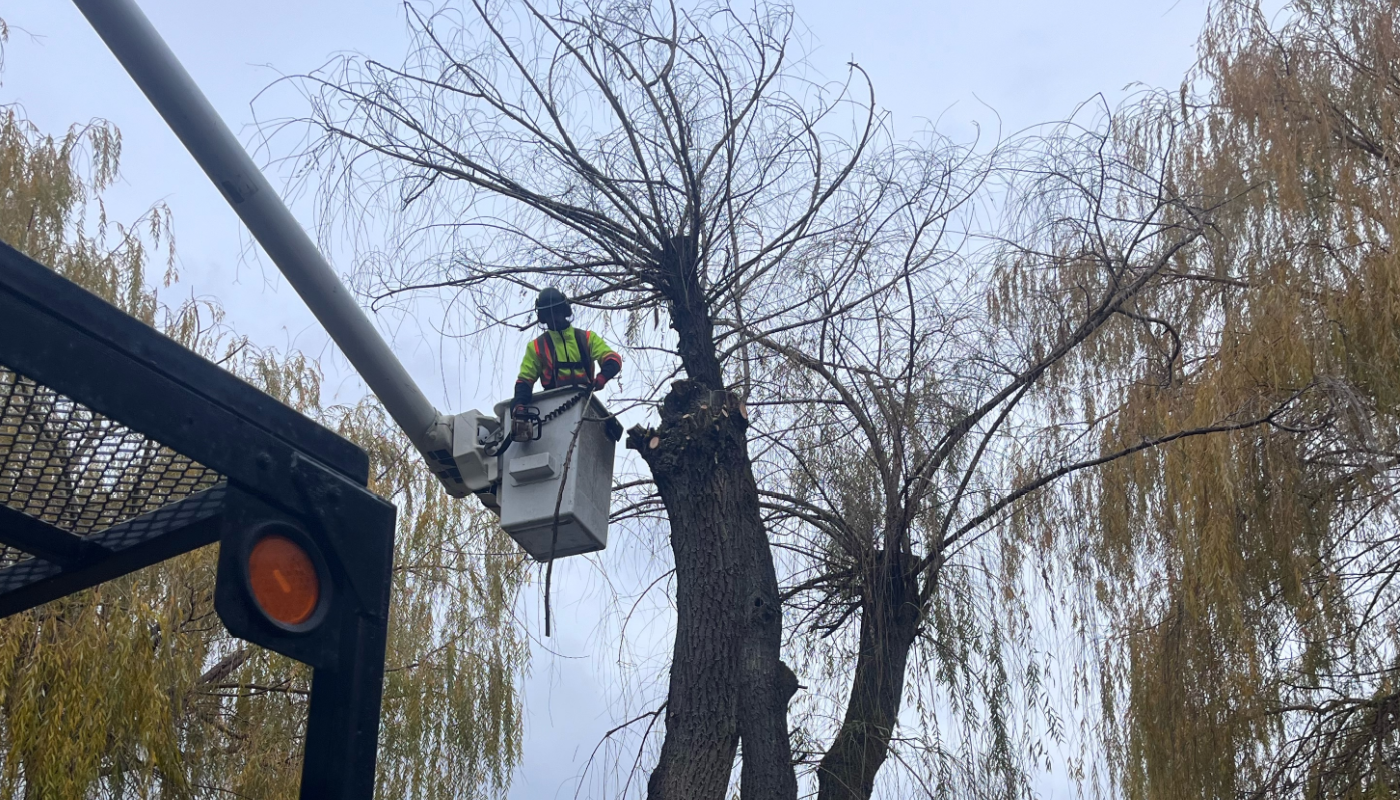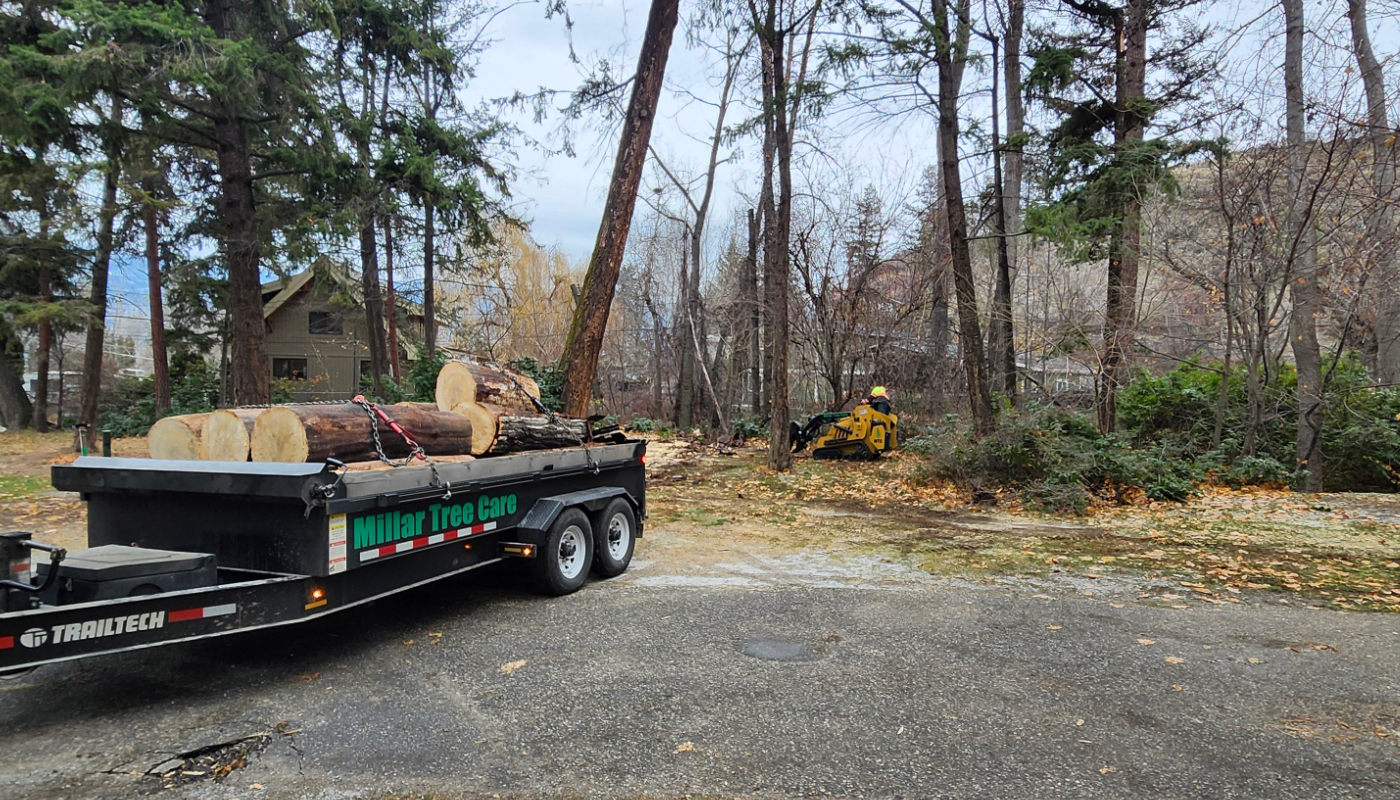Fall Tree Safety in the South Okanagan: Why It Matters More Than Ever
As the Okanagan Valley lights up in shades of amber and crimson, fall brings that familiar mix of crisp air, cozy sweaters, and the quiet hum of preparation before winter. For homeowners, it’s the season of small repairs, raking leaves, and buttoning up the property before the first snow.
But there’s one task that too many people overlook until it’s too late — a fall tree safety check.
At Millar Tree Care, we’ve been serving the South Okanagan for more than two decades, and we’ve seen firsthand how a simple inspection in October can prevent massive headaches in January. Winter winds, heavy snow, and ice can turn a weakened tree into a serious hazard overnight. With a quick, professional check now, you can avoid damage, improve your trees’ long-term health, and rest easier when the storms arrive.
Autumn Advantage: Inspecting Trees Before the Freeze
Fall is nature’s transition period — a moment of rest for your trees before the deep sleep of winter. That pause makes it the ideal time to evaluate structure, strength, and overall health.
When the leaves are still on the branches, it’s easier to spot thinning crowns, uneven growth, and signs of disease. The mild weather also allows arborists to perform pruning and maintenance without stressing the tree. Once the cold sets in, growth slows and small problems can become big ones by spring.
Here in the South Okanagan, our climate adds another layer of urgency. Strong valley winds, temperature swings, and early snowfalls can all increase the risk of branch failure. Taking action before the first freeze gives your trees the best chance to thrive through winter and beyond.
What to Look for During Your Fall Tree Check
You don’t have to be an arborist to spot obvious warning signs. A few minutes of observation can make all the difference.
Here’s what Millar Tree Care recommends every homeowner check before winter:
1. Inspect the Trunk
Start by walking around your tree slowly. Look for cracks, cavities, or areas of missing bark. Healthy bark should be tightly attached and uniform in texture. If you notice bark falling off in sheets, sap leaking, or fungal growth along the trunk, your tree could be decaying from the inside out.
Trees with visible cavities or large holes may already have internal rot — a serious risk factor when high winds hit.
2. Check the Base and Roots
The base of the tree tells a story of stability. Examine where the trunk meets the soil for fungus or mushroom clusters, which often signal root rot. Cracked, raised, or heaving soil can mean the tree’s root plate has shifted. If a tree looks tilted or the ground seems uneven on one side, it’s time to bring in a certified arborist.
Roots are a tree’s foundation — when they fail, the rest follows.
3. Scan the Branches
Branches bear the brunt of snow and ice. Look up and check for dead, cracked, or hanging limbs, especially those near your roof, driveway, or power lines.
Branches that cross each other or grow in tight “V” shapes are more likely to split under pressure. In deciduous trees, watch for brown leaves that cling well after others have dropped — that’s a sign the branch may be dead or dying.
4. Observe the Lean
A tree with a natural, gentle lean isn’t necessarily dangerous, but a new or worsening tilt can be. A lean greater than about 15 degrees, especially if it developed recently, could indicate compromised roots or soil instability. Sudden changes like this need immediate professional attention.
The Cost of Waiting Too Long
Every year, we get emergency calls after the first big snowfall — a branch on a roof, a tree across a driveway, or worse, a fallen trunk tangled in power lines. Many of these incidents trace back to early warning signs that were visible months before.
The reality is that winter magnifies summer’s stress. Drought, heat, and pruning wounds can all weaken trees in ways that only become evident under the weight of snow and ice. A neglected crack or weak branch today can lead to thousands of dollars in damage later.
Performing a fall tree safety check:
Prevents property damage from falling limbs
Protects families and pets from potential injury
Extends the lifespan of your trees
Preserves your landscape investment and curb appeal
Saves money compared to emergency removal costs
At Millar Tree Care, we always say: It’s easier (and cheaper) to trim a branch than to replace a roof.
When to Call a Professional Arborist
There’s a limit to what you can see from the ground. Some warning signs require an expert’s eye — and the right equipment — to assess safely.
You should call an arborist if you notice:
Fungus or mushrooms growing at the trunk or base
Large dead limbs overhanging homes, driveways, or walkways
Cracks, hollows, or visible cavities in the trunk
A noticeable or worsening lean
Trees that were struck by lightning or damaged in storms
Roots lifting from the soil or signs of heaving
Any uncertainty about stability or safety
At Millar Tree Care, our certified arborists are trained through SkilledTradesBC (formerly ITA) and equipped to identify issues that aren’t always visible. We use professional rigging, climbing, and diagnostic tools to assess structural integrity and health safely — without unnecessary damage to the tree or surrounding property.
Why Homeowners Trust Millar Tree Care
Locally owned and operated, Millar Tree Care has proudly served the South Okanagan and Similkameen for over 20 years. From Penticton and Summerland to Oliver, Osoyoos, and Princeton, we’re known for our reliable service, expert advice, and commitment to safety.
Our specialties include:
Tree pruning and trimming for structure and longevity
Hazard assessments and safety inspections
Tree removal and stump grinding
Emergency storm response
Tree health and disease diagnosis
We maintain a spotless safety record and uphold professional standards with every job — whether we’re pruning a backyard maple or removing a large cottonwood near a home. Every project is approached with the same attention to detail, respect for your property, and care for the environment.
Fall Maintenance Tips from Our Team
If you’re a homeowner who likes to stay proactive, here are a few quick seasonal tasks to pair with your tree check:
Rake leaves away from tree bases to prevent mold and fungus buildup.
Mulch before winter to help retain soil moisture and insulate roots.
Water deeply if the fall has been dry — trees still need hydration before the freeze.
Mark hazardous branches with ribbon or paint so they can be pruned before snow arrives.
Schedule professional pruning early — before the winter workload and icy conditions make it harder to complete safely.
A little preparation goes a long way toward protecting your trees and property.
Don’t Wait Until the Storms Start
By mid-November, the Okanagan’s first major snow often arrives. After that, access becomes trickier, ice forms on branches, and small issues can escalate overnight.
Take advantage of the mild weather while it lasts. Schedule your fall tree safety check today and head into winter knowing your property is protected.
Call Millar Tree Care today at (250) 809-5779 or visit millartreecare.com/contact to book your fall inspection.
Protect your home. Preserve your trees. Prepare for winter.



